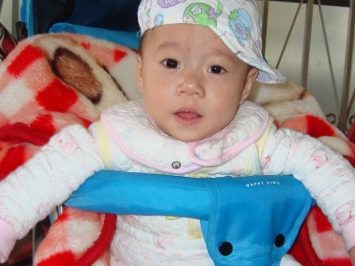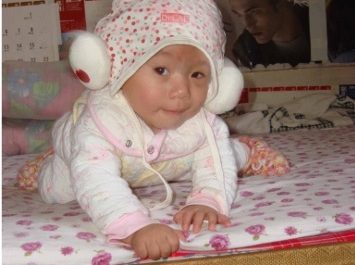HOW WE STARTED
Sea Star’s story starts with a little girl named Tong Tong. At just a few months, Tong Tong was diagnosed with Congenital Heart Disease (CHD), at the time, the number #1 cause of death for children under the age of 5. She had difficulty breathing, and her lips and fingers were turning blue due to the lack of oxygen. Her parents were unable to afford the prohibitively high cost of surgery and did not know how to navigate applying to non-profits for help. A few friends heard about their plight, and joint forces to raise funds and help Tong Tong’s family through the application process of various charities. Tong Tong received the surgery she needed with the kindness of everyone involved. These friends realized that there are so many other children with CHD who still needed their help. And gathered more like-minded friends to form Sea Star Children’s Foundation in March 2012.


HOW WE OPERATE
1. Fundraising
We receive donations from both individuals, corporates, as well as through employee donation matching programmes.
2. Receive Applications from Families in Need
Families hear about Sea Star through partner hospitals or other non-profits. They fill out the application form and can submit it through email or wechat. A printed donation form is also available at many partner hospitals for convenience.
3. Due Diligence Process
Our due diligence specialists review the application form and materials to ensure that the case is genuine and meets Sea Star’s criteria. For example, they review the urgency of the medical condition, the financial background of the family, the surgical risk and the family’s will and ability to care for the child after surgery. Whenever possible, our team member will meet the family and the child in person.
4. Committee Approval
The due diligence committee meets on a weekly basis to review all the applications received during the week. This acts as a check to ensure that all aspects of the case has been reviewed. Once approved, we will transfer the funds directly to the hospital and not the parents to ensure that all funds are used as intended.
5. Feedback to Donors and Oversight
We provide regular updates to our donors on how we are using their donations, the challenges we are facing and how we are evolving. Every year, we engage reputable auditors, Morrison Heng, to conduct an audit of our accounts, to provide full accountability and transparency to our donors.

Why Sea Star
At Sea Star, we pride ourselves on our core values. We set out to form a charity that is accountable & responsible to beneficiaries and donors alike, and we uphold these values in everything we do.
1. Our reputation is our most valuable asset
2. Our goal is to help those most in need
3. We utilise donation received with the highest efficiency
4. We operate with 100% transparency
5. We focus on team building and work closely with our volunteers
6. We see other charities as partners
How we bring our values to life:
Transparency
- Wire to Hospital Only
- Due Diligence Records
- Financial Disclosure
Efficiency
- No salaries, No rent
- Admin costs: Covered by committee and donors who opt-in
- Minimal Expenses
TIMELINE
Mar 2012: Sea Star is registered in HK under IRD S88
Dec 2016: First Cleft Lip & Palate surgeries sponsored with HKU Shenzhen Hospital
Jun 2017: Signs partnership agreement with Fuwai Hospital
Oct 2021: Signs partnership agreement with Chun Miao Foundation
Mar 2015: Signs partnership agreement with Shanghai Medical Children’s Center
2017: Sea Star sponsors first 100 surgeries
2019: Sea Star sponsors first 200 surgeries
Mar 2022: First cochlear implant surgeries sponsored
FUTURE EVOLUTION
When we started back in 2011, many families did not have insurance. For those who did have 新农合 The New Rural Cooperative Medical Insurance, reimbursement % were usually between 20-30% (depends on the coverage that the families purchased), and families were required to pay the cost upfront.
Today, insurance more widely understood. The New Rural Cooperative Medical Insurance, reimbursement % are now commonly around 60-70% (depends on the coverage that the families purchased) and is deducted directly from the hospital invoice.
As a result, the number of CHD cases requiring our support has fallen so we are now helping children suffering from other conditions as well.
The challenges we face are similar to many other non-profit organizations, for example, not enough manhours for non-essential tasks like communications or IT. We are also trying to help families from even more parts of the country but it is challenging since we do not have a network for those areas.
We are also considering how we can help more children more effectively. For example, should we expand towards programs that would help earlier diagnosis of CHD through rural doctor training? Should we be hiring full-time staff member so we can help even more children? We would love to hear from our donors or anyone who is passionate about non-profit work on these topics.



